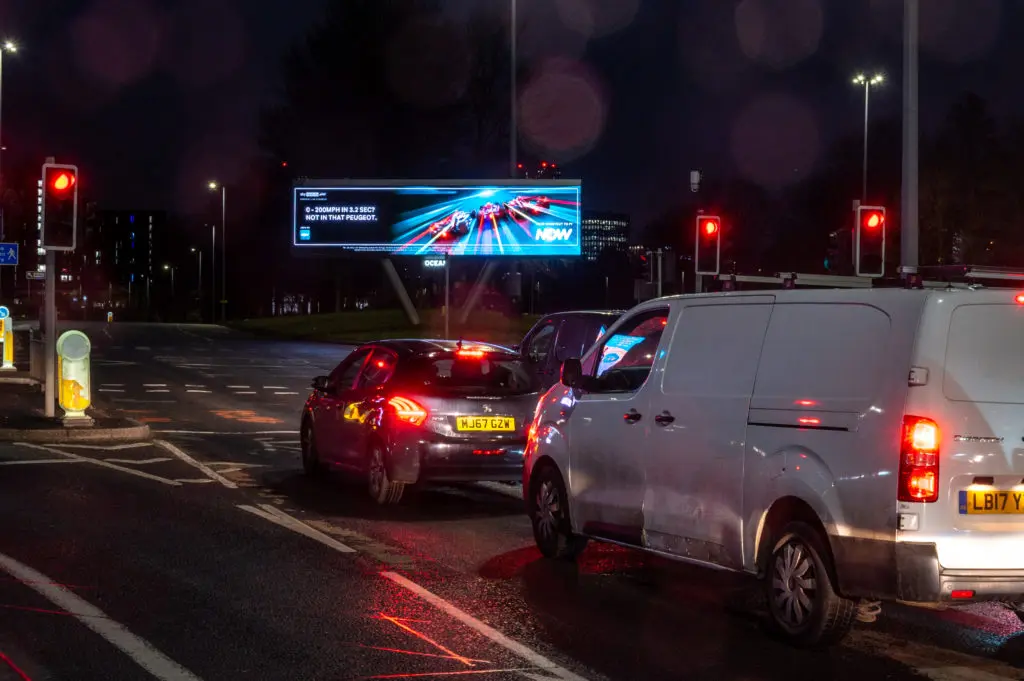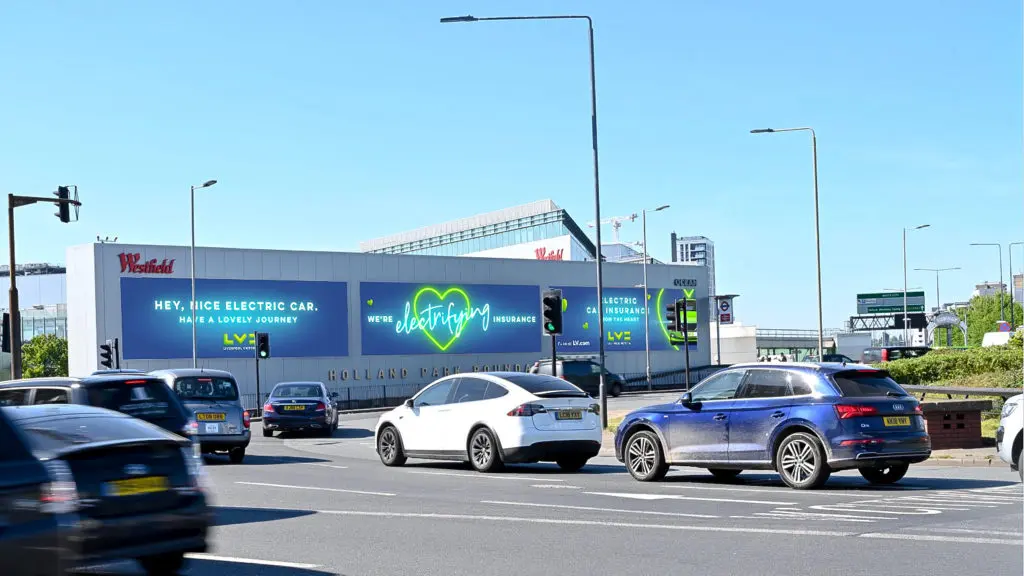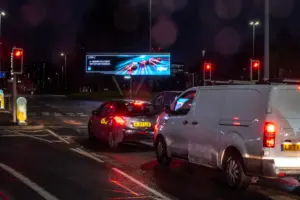A new era of targeted advertising has arrived on the roads of several major UK cities, revolutionizing the way brands connect with consumers. Ocean, a leading out-of-home (OOH) advertising company, has introduced its groundbreaking vehicle detection technology (VDT) across 15 large format roadside locations in Manchester, Birmingham, Newcastle, London, Southampton, and soon to be Glasgow.

Ocean’s VDT allows brands to deliver personalized ad content to drivers and their passengers based on their vehicle’s make, model, year, color, or fuel type. With pinpoint accuracy and zero wastage, ads are displayed only when the chosen target vehicle or type comes into view of the relevant OOH screen. This innovative technology ensures maximum efficiency and eliminates unnecessary exposure to irrelevant audiences.
The proprietary VDT system is fully compliant with GDPR regulations and operates using anonymized data from the automotive industry. It does not store or record any specific details about vehicles or their drivers, ensuring privacy and data protection.
Recently, Ocean partnered with broadcaster Sky Sports to promote live Formula 1 (F1) coverage on its streaming service NOW. By targeting drivers of popular car brands, such as Honda and Ford, Ocean aimed to capture the attention of sports enthusiasts. Contextual messages were displayed on the full motion roadside screens, triggering ads when the selected car brands paused at traffic lights or during rainy weather. This marked the first instance of using VDT to tailor advertising based on weather conditions.
The F1 campaign achieved significant success, generating a considerable number of daily play-outs. Notably, more than 20% of the ads were served at London’s Holland Park Roundabout, while Ford drivers accounted for over 14% of the reached audience.

With the increasing popularity of electric vehicles (EVs), automotive brands have a prime opportunity to target owners of petrol and diesel cars. Kia’s innovative campaign, called Dieselspotting, took advantage of this trend by using VDT in Copenhagen to promote its affordable electric model, the Niro EV. When drivers of upmarket diesel cars traveled along Lyngbyvej towards inner Copenhagen, Ocean Denmark’s VDT-powered screens delivered playful messages, enticing them to consider the Niro EV as a stylish alternative.
To optimize VDT campaigns, thorough planning is crucial. Psychologists assert that the type of car an individual drives can reveal a lot about their personality. For instance, men are more likely to drive Teslas, with the majority falling within the 35 to 54 age range. On the other hand, women aged 18 to 34 are often associated with BMWs, Fiats, Peugeots, and Minis.
Understanding these preferences enables advertisers to create tailored campaigns. Notably, a car finance app study from last year found that 31% of people choose their vehicle based on color. Those who opt for red cars tend to enjoy being in the spotlight and taking risks, making them a prime target for insurance brands and adventurous travel offers. Conversely, black cars evoke sophistication and glamour, making them an ideal audience for designer brands and luxury hotel chains.
As dynamic vehicle-based advertising gains traction, the potential to engage with consumers on the roads opens up exciting opportunities for brands. By leveraging Ocean’s VDT, advertisers can reach their target audience with greater precision and relevance, delivering tailored messages that resonate with drivers and passengers. The future of advertising is here, and it’s hitting the streets in style.

